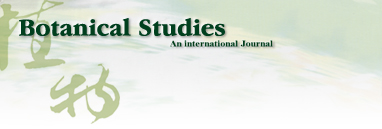 |
|
|
| TITLE | Effect of soil moisture, soil temperature and seed-borne Alternaria carthami, on emergence of safflower (Carthamus tinctorius L.) |
| AUTHOR | H.-H. Mundel Agriculture and Agri-Food Canada Research Centre, P.O. Box 3000 Main, Lethbridge, Alberta, Canada T1J 4B1 H.C. Huang Agriculture and Agri-Food Canada Research Centre, P.O. Box 3000 Main, Lethbridge, Alberta, Canada T1J 4B1 G.C. Kozub Agriculture and Agri-Food Canada Research Centre, P.O. Box 3000 Main, Lethbridge, Alberta, Canada T1J 4B1 C.R.G. Daniels Agriculture and Agri-Food Canada Research Centre, P.O. Box 3000 Main, Lethbridge, Alberta, Canada T1J 4B1 |
| FULL TEXT | [in HTML format] [in PDF format] |
| ABSTRACT | Clean white seeds of safflower, Carthamus tinctorius L. cv. Saffire, from fields in Lethbridge, Alberta, Canada and Portage-la-Prairie, Manitoba, Canada and brown seeds infected with Alternaria carthami Chowdhury from Portage-la-Prairie were used to test the effects of soil moisture and temperature on seedling emergence. Seeds were planted in autoclaved soil, at two water potentials (30 kPa and 1500 kPa), and at five temperatures (10, 15, 20, 25, and 30°C) and rated for seedling emergence. The Alternaria carthami seeds were 32%, 82%, and 96% infected in the white seeds from Lethbridge, white seeds from Portage-la-Prairie, and brown seeds from Portage-la-Prairies, respectively. For temperatures less than 30°C, emergence of seedlings was greatest (>90%) for the white Lethbridge seed; followed by the white Portage-la-Prairie seed (75_85%); with lowest emergence (50_60%) from the brown Portage-la-Prairie seed, over both soil water potentials. While seed source had significant effects on total seedling emergence, temperature and soil water potential did not. However, post-emergence damping-off increased with higher temperature, and its incidence was greater at high soil moisture (with temperatures above 10°C). |
| KEYWORD | Alternaria carthami; Carthamus tinctorius; Seed-borne; Seedling emergence; Soil water potential; Temperature; |
| ARTICLE INFO | Botanical Bulletin of Academia Sinica, Volume 38 Number 4 October 1997, page 257-262, 6 pages |
| PUBLISHER | Institute of Plant and Microbial Biology, Academia Sinica, Taipei, Taiwan, Republic of China |
